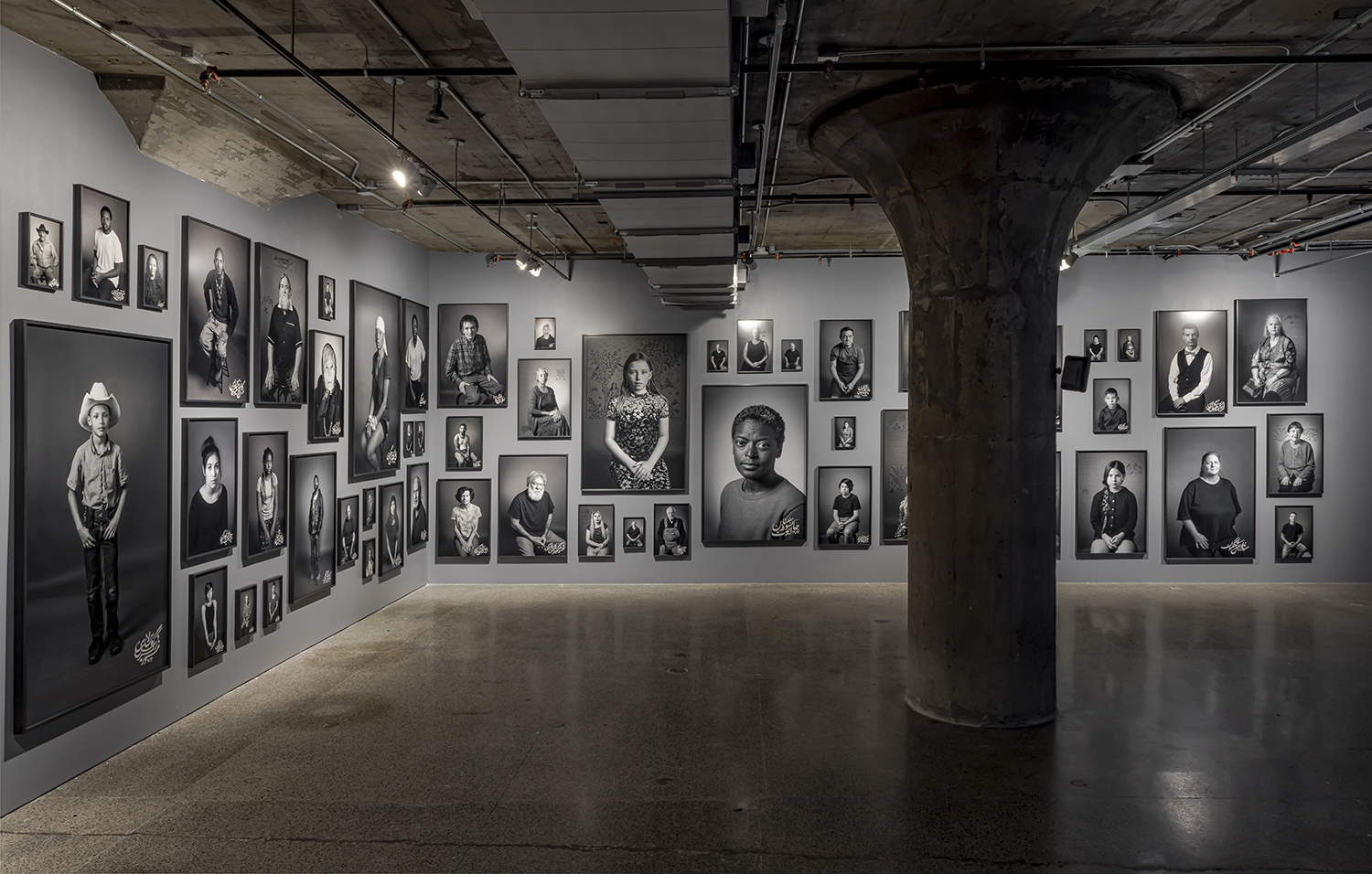
MOCA provides a range of exhibitions this summer
By Jordan Z. Adler
Toronto’s Museum of Contemporary Art (MOCA), now in its 24th year, is not just a space to experience boundary-shifting creativity. Its current home, the bottom floors of the Tower Automotive Building, is beginning to resemble a work of art itself.
A new, steel, sky-blue installation entitled “Mashrabiya,” made by Tehran-born, Toronto-based artist Ghazaleh Avarzamani, now juts out from the museum’s walls. The name refers to a work of architecture common within traditional Islam, an oriel window that helps to stream air into the space.
The mashrabiya is a tool for privacy as well, shielding women from public view while allowing them to see activity outside. Depending on which side of the installation one stands, you are either the observed or the observer.
“The owners of the building have acquired that piece,” says November Paynter, MOCA Toronto’s artistic director, on this new addition to public art in the city. “It is now available to see indefinitely on the façade.”

Avarzamani’s work reflects the globality of the city where it is exhibited. But the presence of “Mashrabiya” is not the only way that MOCA Toronto is reframing its purposes as a museum. The building’s south stairwell acts as a concrete connector of exhibits. The passageway also exists as a kind of studio space for Toronto artists who work with sound design. The sonic rhythms in the stairwell serve to transform this industrial walkway into its own kind of hypnotic environment.
Sound-based artist Debashis Sinha, a second-generation South Asian Canadian, is currently bringing the melodies and textures of Kolkata, India into the stairwell. What makes the audio so evocative and unusual for those who listen is the way these spiritual sounds have been partially determined by machine-learning algorithms and AI. The artists that were commissioned to create sounds for this setting are all Toronto-based. Sinha’s recordings can be heard vibrating through the building until July 31.
“You can feel the history of the building,” Paynter says of this multi-storey art space. “The way people are mixing the sound in the space, you kind of move up through the soundwaves. I think it’s quite a beautiful, uplifting experience.”
The Tower Automotive Building, MOCA Toronto’s current headquarters in the Lower Junction, was once considered the tallest high-rise in Toronto when it opened in 1919.
When MOCA moved to the new space in 2018, the shift also coincided with a name change: the former Museum of Contemporary Canadian Art (or MOCCA) excised the word “Canadian.”

Nevertheless, there is still plenty of arresting work by the country’s best artists on display. The decades-old industrial building also offers artists a wealth of flexibility. Part of the fun of working in this building, Paynter says, is its ability to adjust the audience’s expectations.
For instance, one of this season’s exhibits, the first solo Canadian show from Felix Gonzalez-Torres, is entitled “Summer.” But the show is not static…as the temperatures warm in Toronto, the pieces will re-arrange. The show’s title also changes, appropriately, to “Winter.” “I feel that Felix’s work is just so generous, the way it somehow embraces you and allows you to imagine how your everyday environment can hold so much potential and speak to so many complex ideas,” Paynter says. “[The exhibition] embraces people, I think, and brings them into the conversation.” It’s that attention to experiencing art in new ways that helps MOCA attract repeat visitors.
“With [Gonzalez-Torres’s] show in particular, [curators] are spending a lot of time navigating and talking about the work with people coming into the space,” Paynter says. “On a personal level, it feels so good to see people back and engaging with any kind of cultural expression.”
Ever since its genesis as a not-for-profit space in 1999, MOCA Toronto has found much acclaim as a launching pad and experimental venue for local and Canadian artists. For more than two decades, the museum has shown works by more than 1,000 artists.

In its first decades, the museum included many exclusive works of fine art, filmmaking, and photography. In 2010, the museum even collaborated with the National Gallery of Canada (NGC) to co-curate that gallery’s extensive repository of contemporary art, among other programs.
One of those innovators whose work was featured in a co-presentation between MOCA and the NGC was Thomas Demand. The German sculptor and photographer also has a MOCA show planned for the near future.
Also on the horizon are shows from Kapwani Kiwanga, from Hamilton, Ontario. Kiwanga, a multidisciplinary artist whose work explores the histories of Africa and the African diaspora, won the prestigious Marcel Duchamp Prize in 2020.
Another Canadian poised to create conversation in future seasons is Montreal’s Kelly Jazvac, who focuses on a sustainable visual art and practice. This dual interest in the artistic and the scientific invites a repurposing of existing work.
Apart from these national treasures, MOCA Toronto’s staff is also working to expand its curated repertoire to include more works from non-Canadians. Part of that re-branding is meant to shift MOCA to its desire of being more than simply a local museum, but an international destination.
“We actually had somebody who mentioned to us the other day, they had come all the way from L.A. just to see the exhibitions,” Paynter tells The Collection. “It’s amazing. They routed their flight through Toronto so they could see it.”

Among the recent shows luring out-of-towners are exhibitions by filmmaker and photographer Shirin Neshat, and interdisciplinary artist Jeffrey Gibson. In Neshat’s show, she attempts to capture portraits of exile among new arrivals in the United States and Muslim women in Iran. For the former series, the media-maker photographed more than 100 people from New Mexico, searching for evocative portraits that could reveal something about their dreams.
Meanwhile, Gibson focuses on the histories of various Indigenous cultures in the United States but brings this subject into the contemporary with flair.
His work – posters, stickers, paintings, beadwork – is also flooded with saturated colours, foregrounding aesthetics, materials, and messages of Indigeneity. The art exists on 15 movable platforms, and those attending the exhibition can even sit on them.
“We have a lot of programming that is participatory to some extent,” Paynter says. “[For Gibson’s exhibition], we worked with a local publisher in a local bookstore to include 100 books by authors for children within the space.”
“There’s these little additional elements that we try to program in to make sure people feel that it’s a welcoming, accessible space.”
Neshat, Gibson, and Gonzalez-Torres’ exhibitions all run until July 31. For more information, visit moca.ca

